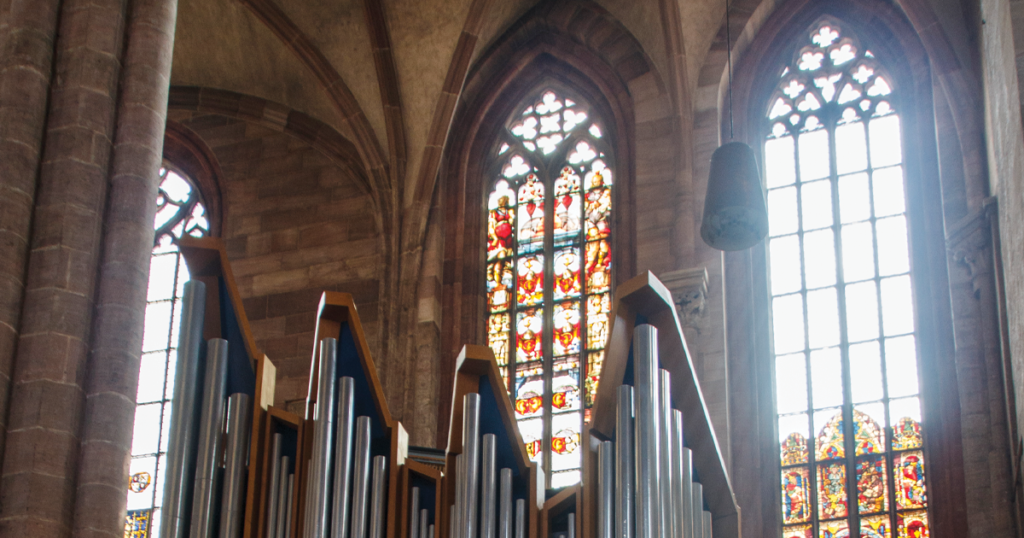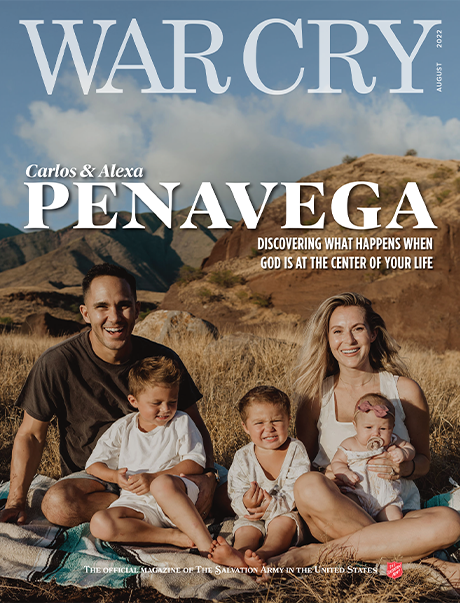What is Worship? – Part 2
We are invited to worship in spirit and truth wherever we are.
Living in the United States, I rarely have the opportunity to enter a building more than 500 years old. So, on a family trip to Germany last summer, it was our desire to visit some of the most beautiful and oldest churches in the country.
It was a hot and sunny Saturday when we stepped into the St. Laurence Church in central Nuremberg. Built in the 15th century in a Gothic style, its towers soar above the city skyline. A sign on the sidewalk invited me in for an organ concert. I do not typically seek out organ concerts, but I longed to hear the massive power of the pipes lining the sides and back of the ancient church. The tone’s vibration pulsed through my whole body. My eyes lifted heavenward to the soaring and decorative ceiling. The light through the stained-glass windows danced as the sun set. I felt as though I was experiencing a little piece of heaven. The notes of the music sang of the dissonance I felt in my spirit and reminded me of God’s promise of resolution. God met me in that organ concert. It was the exact sort of place one might expect to meet God, a place where people have met with God for centuries.
This month, we will continue to consider what true worship is based on the lessons of the Tabernacle from the Book of Exodus. Last month, we looked at the outer court and our invitation to prepare our hearts to meet God in worship. Now we continue our journey to the center of the Tabernacle by entering the Holy Place. This was a place located just steps from the very presence of God, separated only by a veil. This was the sort of place priests expected to meet God. Remember that the Tabernacle is a shadow of the true Tabernacle in Heaven, the Holy Place that invites us to be near to God.
The Holy Place
Toward the back half of the courtyard sat a large tent, 15 feet wide and 45 feet deep. This tent contained two rooms: The Holy Place and the Holy of Holies. The first room was the Holy Place, which contained three important pieces of furniture: the lamp, the table and the altar of incense. Each of these pieces of furniture reveals something about who God is and our response to Him.
The Lampstand
As you entered the Holy Place, a large lampstand would have been on your left. Scripture doesn’t specify exactly how large it was, though it says it weighed 125 pounds of pure gold, so it likely stood at least five feet tall with seven total branches. It was beautifully crafted with flowers, buds, pomegranates and lilies arranged in its design. Each of the seven lights needed to be tended. The priest entered daily to ensure the oil was plentiful for the lamp to burn continually day and night. John 8:12 makes it clear that Jesus is the light of the world. The light of God will never go out. As believers, we can cultivate that light and ensure it will not go out by tending to it daily.
The Table of Showbread
On your right as you entered the Holy Place would be a table with 12 loaves of bread. Made of wood and completely covered in gold, the table held the bread that was placed before the Lord regularly. The priests could eat it after it was replaced on the table. Eating around a table represents fellowship and sustenance. The table in the Holy Place reveals God’s desire to have a meaningful relationship with us and His ability to provide for our basic needs. God knows that we need food, but physical food isn’t all we need. Deuteronomy 8:3 reminds us that “people do not live on bread alone; rather, we live by every word that comes from the mouth of the Lord.” The bread also symbolizes God’s word, which He has given us in the Old and New Testaments. We rarely go a whole day without physical food, but do we go a day without God’s word? Should we be physically fed while spiritually malnourished? God desires to meet with us. He desires to provide for us physically and spiritually. We must be willing to take the food He offers us.
Altar of Incense
At the end of the room, just in front of the curtain that leads to the Holy of Holies, sits the altar of incense. A priest would enter morning and evening to light the incense, producing a continually fragrant offering to God. While he entered, worshippers would be outside praying. We learn in the Book of Revelation that immediately in front of God’s throne, there are also bowls of incense, in God’s very presence, and that the incense is “the prayers of God’s people” (Revelation 5:8).
The image of our prayers rising up to God as smoke rises from a candle is comforting. Those of us who feel that our prayers hit only the ceiling can take comfort in this reminder that our prayers are received in the very throne room of heaven. They are a fragrance which permeates the heavenly atmosphere. It bears repeating, however, that the worshipper who offers the incense has already prepared their hearts and dealt with sin before entering the Holy Place. They enter the Holy Place and recognize God as the light. They trust Him for their physical and spiritual sustenance. We must come to God on His terms and He will delight in our prayers.
Approaching God
With so much gold and the flicker of seven oil lamps, you can imagine the splendor revealed as the priests entered the Holy Place. Though there is mystery as the worshipper approaches God, there is also invitation. God reveals Himself as the light-giver, provider and prayer-receiver. We recognize that worship includes daily tending. My experience of worship in a 500-year-old church was a transcendent experience of God’s presence in a holy place. And yet, nothing about worship is required to be in a special place. We are invited to worship in spirit and truth wherever we are.
Questions to consider
- What places stand out as a “holy place” in your life?
- How do you tend to your relationship with God daily—as the priests tended the lamp, table and altar of incense daily?
- Have you experienced a secular place becoming holy because God met you in a surprising way?
Photo by Carso80 iStock / Getty Images Plus







